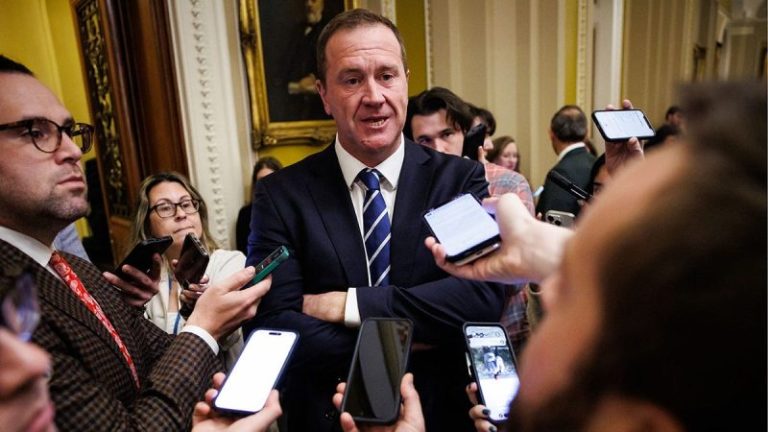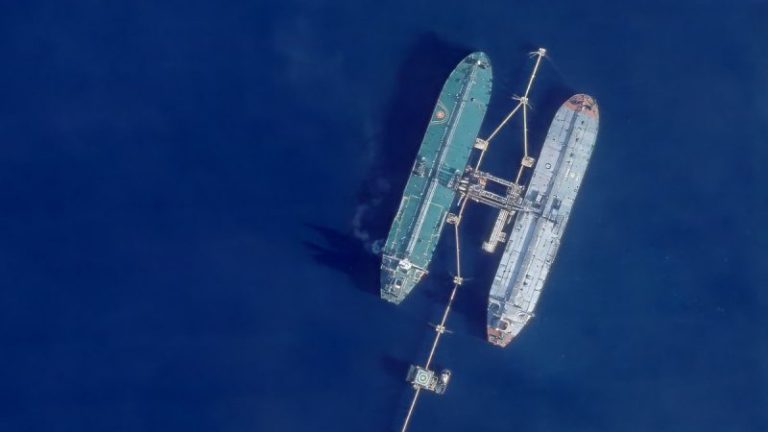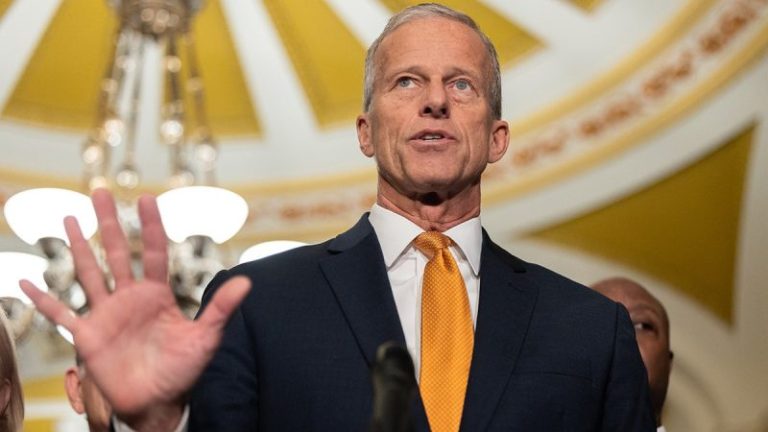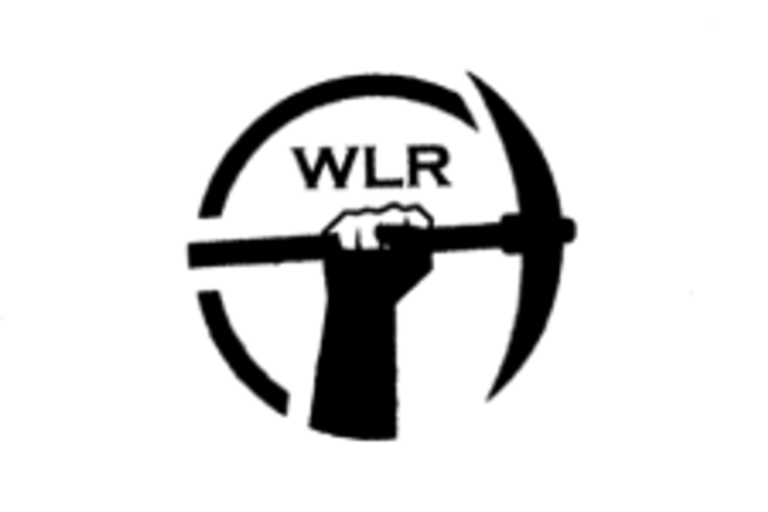Sen. Eric Schmitt, R-Mo., is being sued by the People’s Republic of China (PRC) for tens of billions of dollars in damages for a lawsuit he filed against the country during his time as Missouri’s attorney general.
Schmitt is being sued by the People’s Government of Wuhan Municipality, the Chinese Academy of Sciences and the Wuhan Institute of Virology of the Chinese Academy of Sciences for roughly $50 billion, several years after the lawmaker sued the country during the COVID-19 pandemic.
The lawsuit, first obtained by Fox News Digital, accused Schmitt, FBI co-deputy director Andrew Bailey, and the state of Missouri of damaging the reputations of China, Wuhan and the associated research facilities through ‘malicious vexatious litigation, fabricating enormous disinformation, and spreading stigmatizing and discriminating slanders.’
Schmitt said in a statement to Fox News Digital that he’d been ‘banned from Communist China, and now I am being sued and targeted by Communist China in a $50 billion lawfare campaign, and I’ll wear it like a badge of honor.’
‘China’s sinister malfeasance during the COVID-19 pandemic led to over a million Americans losing their lives, economic turmoil that rocked our country for years, and an enormous amount of human suffering, and as Missouri Attorney General I filed suit to hold them accountable,’ Schmitt said. ‘Instead of trying to defend its indefensible behavior, Communist China responded with frivolous lawfare, attempting to absolve themselves of all wrongdoing in the early days of the pandemic.’
‘This novel lawsuit is factually baseless, legally meritless, and any fake judgment a Chinese court issues in this lawsuit we will easily beat back and keep from being enforced against the people of Missouri or me,’ he continued. ‘This is their way of distracting from what the world already knows, China has blood on its hands.’
Schmitt, who served as attorney general for the Show-Me state from 2019 to 2023, sued the PRC, several Chinese government ministries, the Communist Party of China, the Wuhan Institute of Virology and the Chinese Academy of Sciences in early 2020, shortly after the beginning of the COVID-19 pandemic.
At the time, Schmitt accused the Chinese government of withholding information on the COVID-19 virus, failing to contain the outbreak of the virus, and actively hoarding high-quality personal protective equipment (PPE) while producing and selling lower-quality PPE for the rest of the world.
That case resulted in an eventual $24 billion judgment earlier this year.
The lawsuit against Schmitt, Bailey, who resigned as Missouri’s attorney general after he was tapped by President Donald Trump to serve as co-deputy FBI director in September, and Missouri contended that the preceding lawsuit, and statements published across a variety of media outlets, led to severe reputational and economic harm.
They’re demanding that apologies be published in several outlets, including The New York Times, CNN, Wall Street Journal, Washington Post and Chinese media outlets. The apologies come with a price tag, too.
Wuhan and the Chinese government demanded compensation of over 356 billion Chinese Yuan, which converts to just over $50 billion dollars.










